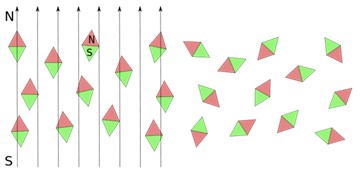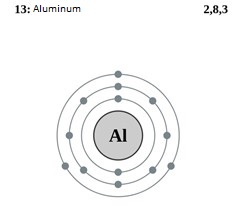
What is paramagnetism?
Paramagnetism was discovered by Michael Faraday, who determined that most elements exhibit some level of paramagnetism. Paramagnetism is a type of magnetism that is weakly attracted by a magnetic field that is activated from the outside. This type of magnetism is found in paramagnetic materials.
Paramagnetic materials are materials that have permanent atomic dipoles which are placed linearly (parallel) in the direction of an external field. This material has a positive susceptibility, and when the magnetic field disappears, these materials lose all their magnetic properties. On the other hand, we can find unpaired electrons and other absent electrons.

Pauli paramagnetism appears in conduction, unaffected by temperature. The Pauli exclusion principle states that from one atom there cannot be 2 electrons that have the same 4 quantum numbers, in the other words, there must be opposite spins.
Paramagnetism characteristics
Paramagnetism in materials can be attracted by another magnet. However, it does not have the ability to attract another paramagnetic material. Paramagnetic materials have a small positive susceptibility (between 10-6 and 10-2).
Unlike diamagnetism, paramagnetic materials are affected by temperature. So, if the temperature increases, the order of the magnetic moments of the atoms decreases. This temperature is expressed by Curie’s law.
X =C/T
X = magnetic susceptibility
C = Curie’s constant (each material has a different one)
T = absolute temperature (K)
Another factor to be taken into account is the magnetization (M) which depends on the field strength
M = XH
Paramagnetism in the periodic table
Like diamagnetism, to know whether a material is paramagnetic or not, we must know the electronic configuration of the material in question In the case of paramagnetism, the electrons are unpaired.
Such as aluminum:

Aluminum has 3 electrons in the valence shell so it has one unpaired electron, which, as we have read, means that it is a paramagnetic material.
To know whether a material is paramagnetic or not, we have to look at the valence layer (the last layer, if it is unpaired, we will find that it is paramagnetic, in other words, paramagnetic elements have an odd number of electrons).
The valence layer is the last layer. The periodic table consists of 18 groups and 7 periods. Each time you change period you change layer.